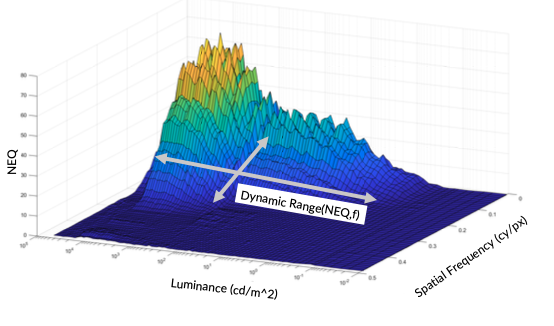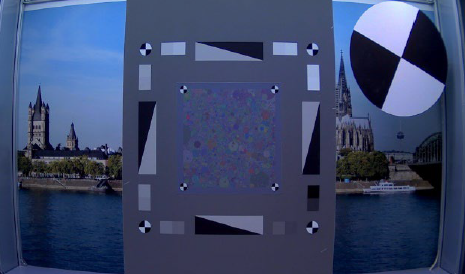
This paper investigates the application of Noise Equivalent Quanta (NEQ) as a comprehensive metric for assessing dynamic range in imaging systems. Building on previous work that demonstrated NEQ’s utility in characterizing noise and resolution trade-offs in imaging systems using the Dead Leaves technique, this study seeks to validate the use of NEQ for dynamic range characterization, especially in high-dynamic-range (HDR) systems where conventional metrics may fall short. This paper makes use of previous work that showed the possibility to measure noise and NEQ on the dead leaves pattern which is otherwise typically used for the measurement of the loss of low contrast fine details, also called texture loss. This shall now be used to improve the measurement of the dynamic range.

Noise Equivalent Quanta (NEQ) is an objective Fourier metric which evaluates the performance of an imaging system by detailing the effective equivalent quanta of an exposure versus spatial frequency. Calculated via the modulation transfer function (MTF) and noise power spectrum (NPS), it is a valuable precursor for ranking the detection capabilities of systems and a fundamental metric that combines sharpness and noise performance of an imaging system into a single curve in a physically meaningful way. The dead leaves measurement technique is able to provide an estimate of the MTF and NPS of an imaging system using a single target, and therefore a potentially convenient method for the assessment of NEQ. This work validates the use of the dead leaves technique to measure NEQ, firstly through simulation of an imaging system with known MTF and NPS, then via measurement of camera systems, both in the RAW domain and post-ISP. The dead leaves approach is shown to be a highly effective and practical method to estimate NEQ, ranking imaging systems performance both pre- and post-ISP.